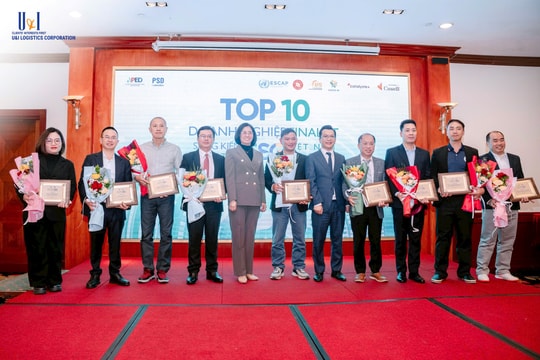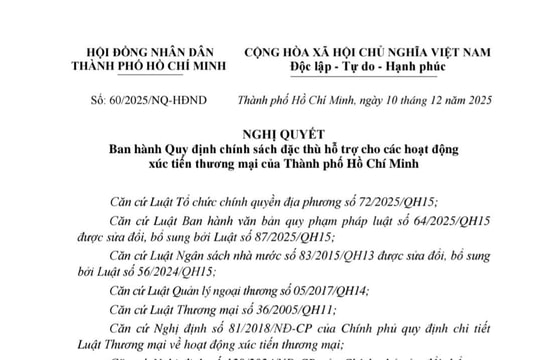(Vietnam Logistics Review)The Mekong delta is facing the most severe drought and salinity intrusion. Most of the provinces declare natural disaster level 1, some even declare natural disaster level 2. The situation has made serious impacts on people’s life and production, especially on supply chains of rice and aqua-products.
Severe drought and salinity intrusion
The water level on the upper of Mekong River is going down to its lowest in the past 90 years. Due to the lack of fresh water in the dry season, salinity intrusion happened two month earlier than usual and will possibly end later. At regional estuaries, saline water has entered 50-70km. Coastal areas of 30-40km from the sea as Ben Tre, Tra Vinh, Soc Trang, Bac Lieu, Ca Mau, Kien Giang are unable to find fresh water. On Vam Co River, saline water entered 90km, 15-25 km further than usual. Places that have not experienced salinity intrusion like Vinh Long are now facing it. Some forecasts showed salinity intrusion will be more serious in the coming time and will last until June 2016.
There have been many scientific analysis on the cause of the severe drought and salinity: weather change that has affected, the rise of sea-water, unusual rains, El Nino that has last since 2015… And the same time, water from the upper of Mekong River is insufficient due to the large number of hydropower works in China, Laos and Cambodia, together with issues from hydraulic works, salinity-prevention dyke system, leveling water-preservation lakes, flood preventions for Dong Thap Muoi and Long Xuyen quadrangle with numbers of sluices to the West sea that limit natural adjustments.
Initial impacts
Drought and salinity intrusion cause serious damage not only to rice plants but aso to fruit trees, industrial trees, aqua products, and possibly cause forest fires.
According to statistics from the Ministry of Agriculture and Rural Development, in the Winter-Spring 20152016, 8 coastal provinces of the Mekong Delta as Long An, Tien Giang, Ca Mau, Tra Vinh, Kien Giang, Ben Tre, Bac Lieu and Hau Giang started planting in 971,200 ha (62.2% rice-planting areas), among which 339,234ha facing drought and salinity intrusion (35,51% planting area of the coastal). For example, in Kien Giang, there have been over 34,000 ha of rice ravaged and the damage will keep increasing with lingering drought and salinity intrusion. It is initially estimated that to the February of 2016, farmers in the Mekong Delta have experienced damages of over VND 1,000bn. The amount of rice in the Mekong Delta is estimated to decrease 700,000 tons year-over-year. If salinity intrusion lasts until June 2016, there will be 500,000 ha of rice of summer- autumn season affected and 1 million families with 5 million people will face difficulties; 150,000 family will lack household water.
Also affected by salinity intrusion, areas for aquafarming have remarkably decreased. All brackish water shrimp-farming areas have been affected. Farming areas downstream of Hau River as Ben Tre, Soc Trang, Tra Vinh and Kien Giang have been seriously affected, which may ruin plans of aqua-product farming. Initial statistics from Water Resource Directorate (the Minister of Agriculture and Rural Development) showed damaged areas for shrimp-farming was 3,771ha, excluding damaged areas for catfish and snakehead fish farming. Ca Mau had 70% of damaged area (2,700ha), Tra Vinh and Ben Tre came next, 30-70%. Some region with stable shrimp-farming models as shrimp- rice, extensive shrimp farming,and innovative shrimp farming also suffered severe damages.
Statistics from the first quarter meeting by the Directorate of Fisheries at the end of March 2016 showed the production of the first three months of 2016 estimatedly reached 722,100 tons, an increase of 3.7% year over year, among which sea-exploiting products reached 639,800 tons, an increase of 3.9%. However local exploitation reached only 38,000 tons, a decrease of 2.6% year-over-year.Products from shrimpfarming in the first three months reached 58,500 tons, equally 95.1%, among which the amount of tiger shrimp reached 36,000 tons, equally 97.3%, king shrimp, 22,500 tons, equally 91.8%.
The situation resulted in the lack of materials in aquaproduct processing factories in the area. According to Camau Association of Seafood Exporter and Producers (CASEP), the materials only reach 37%-38% of factories’ capacity. Of 33 processing factories in the province, 17 ones have experienced the lack of materials, accounting for 50% of operating factories. Many business had to import shrimps. According to the Ministry of Agriculture and Rural Development, in the first quarter of 2016, Vietnam had to pay USD 228m for importing materials for aqua-product processing for export. Materials mostly come from India (34.1%), Norway (8.1%), Taiwan (6.8%), Japan (5.5%) and Korea (5.1%).
Together with drought and salinity intrusion in provinces in the Central Vietnam and Tay Nguyen, the similar situation in the Mekong Delta caused first negative growth. Statistics from General Statistics Office of Vietnam (the Ministry of Planning and Investment) in the press conference about GDP- labor- jobs of the first quarter 2016 on the afternoon of March 25th showed in the first 3 months, the country’s GDP showed signed of slowing down with the increase of 5.46% (lower than the increase of 6.12%
last year). Agriculture, forestry, and aqua-production sector have negative growth, a decrease of 1.23%: the agriculture sector experienced the worst decrease of 2.69%. Import-export activities are slowing down with the trend of export surplus is coming back, import-export value decreased 4.8% year-over-year.
Solutions
The Government, ministries, sectors and local authorities have had solutions to deal with drought and salinity intrusion to limit their damages to agricultural production and other economic sectors. The bank sectors has also got involved by offering charge-off, debt rescheduling and new capital for ravaged areas. Some important solutions in terms of international and regional relations have also been mentioned.
However, the long-term solution is how to let the Mekong Delta have sustainable development in the harsh natural conditions. There have been ideas from scientists about solutions with droughts and salinity intrusion, about restructuring rice-growing sector, about intensive farming with plants and animals at areas with salinity intrusion… Coastal people should have support from the Government. They are longterm solutions that need contributions from related ministries and sectors.



.png)




.png)

.png)



.png)
.png)
